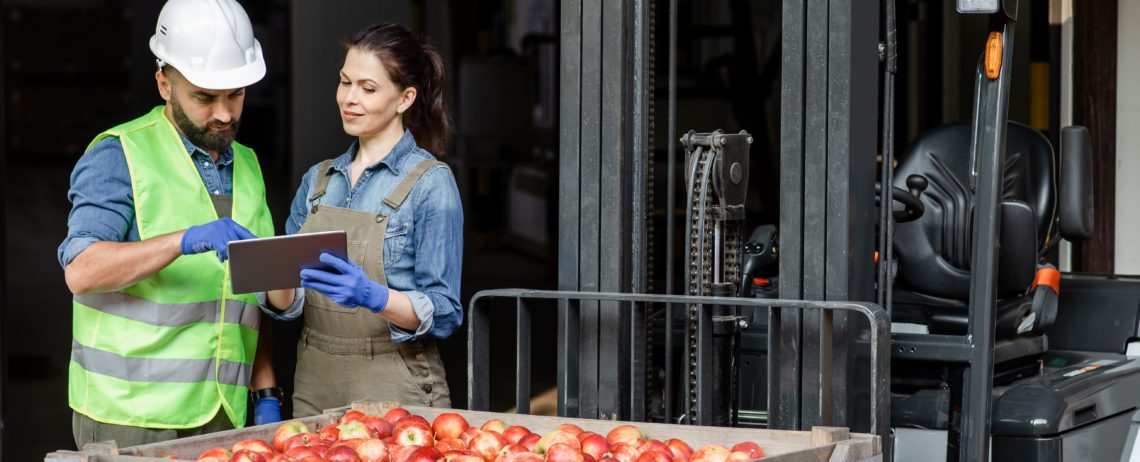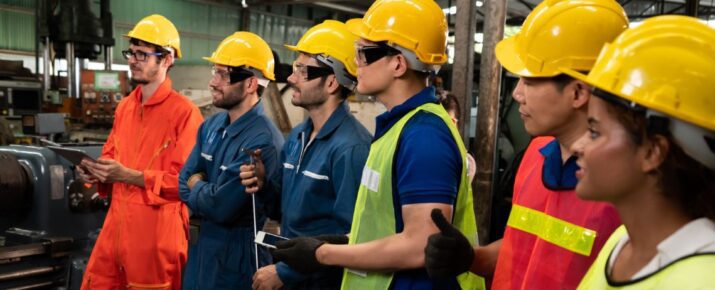Preventing manual handling risk factors in the workplace
Ask The Experts | By | 10 Aug 2022 | 4 minute read

What a pain in the … back?!
Work-related musculoskeletal disorders (MSDs) are one of the most common causes of time away from work and are prevalent across all industries. Common musculoskeletal disorders can affect your back, neck, arms, hands, legs, and feet, decreasing mobility and flexibility. The Health and Safety Executive (HSE) reported 8.9 million working days lost due to work-related musculoskeletal disorders in the UK for the previous year.
Being able to identify the hazards associated with work-related musculoskeletal disorders can be challenging. When I started as a Health and Safety (H&S) manager, only poor manual handling risks or lifting heavy items were considered to cause muscle strains and injuries. However, they can also stem from the slightest things. Risk factors for musculoskeletal disorders can range from moving a box to sitting at your computer.
This article explores the risk factors for work-related musculoskeletal disorders and ways to prevent them in your workplace.
Making it LITE with manual handling risk assessment
Manual handling is among the leading causes of musculoskeletal disorders in the workplace. Carrying heavy weights without proper training can put workers at risk of injuring their arms, legs, and joints. Fortunately, they can be prevented through risk assessment strategies.
Performing a risk assessment for manual handling associated with work-related musculoskeletal disorders should be reasonably straightforward (we’ll come onto other causes later). A quick and easy way to remember what to watch out for during inspections is the acronym LITE: Load, Individual, Task, and Environment.
Consider the load
When lifting heavy objects around the field or building, always remember to consider the load you’re carrying. It’s best to ask yourself these questions:
- What is it that you are moving?
- What is its weight? Size? Shape?
If it’s possible to spread the load or break it down into manageable parts, this could reduce the manual handling risk of injury.
Consider the individual
I feel that this is the most important aspect because it’s the manual part of manual handling. Plus, at the end of the day, as an H&S professional, the reason we do what we do is to keep people safe and healthy.
I’ve worked with strong individuals who have overestimated their capability and those working with repetitive movements, not realising that this could result in an injury. One day, a person could easily move a load, and the following day, they could feel under the weather and not be as capable.
It’s also important to consider other external aspects affecting the individual. If they already have a full workload, could they feel pressured into rushing the task and increase the likelihood of a work-related musculoskeletal disorder?
Team lifts are a great way to spread the load. But it does require more communication and a little more planning.
Consider the task
Where is the load being moved to? How many times does it need to be moved? Within the manual handling risk assessment, planning the route and identifying any issues before starting the task can eliminate problems and make it more efficient.
My advice is to always walk the route when planning tasks that involve moving something from A to B. Find out how many doors you have to walk through, the steps you have to go over, and the corners you have to get around.
As I touched upon earlier, repetitive movements can cause work-related musculoskeletal disorders so try to eliminate twisting, reaching, and bending movements from a task.
Consider the environment
The work area should have enough space and light to carry out the job, as any task should. Other aspects affecting work-related musculoskeletal disorders—such as temperature, noise, and floor surface—should also be controlled.
For example, if the manual handling task is being completed in a hot environment, such as a foundry, this can tire the operator more quickly and increase the risk of work-related musculoskeletal disorders.
Getting injured from not moving: Is it possible?
Did you know that work-related musculoskeletal disorders can also be caused by sedentary work? Our bodies are not designed to stay still!
Sitting at a computer workstation or standing at a production line can also lead to work-related musculoskeletal injuries. I’ll cover risk assessments for display screen equipment and workspace ergonomics in a separate article.
Preventing and managing manual handling risks at work
For those reading this who have suffered from work-related musculoskeletal disorders, they stay with you. It shows that prevention is indeed better than cure. Every small change in habits can mean a world of difference for your overall health and well-being.
Here are four simple ways to avoid and effectively manage workplace injuries resulting from manual handling mishaps.
Tip #1: Don’t do it!
The best way to manage manual handling risk or eliminate work-related musculoskeletal disorders is to stop doing these harmful things in the first place.
Instead of lifting things manually, use lifting aids like sack trolleys, forklift trucks or robots. Likewise, if you tend to stay sedentary for long periods, use standing desks with a treadmill or set your watch to remind you to move to a different position every hour.
Tip # 2: Conduct training for personnel
Training the workforce in the best lifting and manual handling techniques is also advisable, as people can become complacent over time and forget the best practices for safety.
This is available on EdApp by SafetyCulture as a series of micro-learning courses. The methodology with EdApp anchors itself on continual learning through regular knowledge boosts to reduce the likelihood of deviating from the original training information.
Tip #3: Enhance communication across teams
Once training is complete, it should also be followed up by communicating the manual handling risk assessment. The Heads Up feature in SafetyCulture (formerly iAuditor) is the perfect tool for this task.
With this capability, sending communication materials to the front line has never been easier. Simply create a Heads Up via the app, attach the file you need (in PDF, image, or video formats), and you’re good to go! The information instantly reaches your frontline workers wherever they are via their mobile devices.
In the case of DB Schenker, the Heads Up functionality has proven to increase awareness and provide feedback opportunities for developing good practices and an engaged workforce.
Tip #4: Prepare your muscles
If you do have to manually handle products, try warming up your muscles as you would before exercise. Doing this reduces the risk of muscle strain and injury. Why not try doing this as a group or a team at the start of your shift?
If you spend your day on Zoom calls, start a meeting with 2-3 minutes of desk stretches. There are lots of reputable free videos online available to use.
Key takeaways
- Work-related musculoskeletal disorders are one of the most common causes of time away from work.
- If you don’t have to carry something manually, don’t do it. Find another way to accomplish your task without straining yourself.
- Manual handling risk assessments should be completed before any task and communicated to those involved.
- Keep things LITE—consider the load, the individual, the task, and the environment.
- Train people in the best manual handling techniques and reinforce them regularly.
- Prevention is better than cure—look after your body.
Important Notice
The information contained in this article is general in nature and you should consider whether the information is appropriate to your specific needs. Legal and other matters referred to in this article are based on our interpretation of laws existing at the time and should not be relied on in place of professional advice. We are not responsible for the content of any site owned by a third party that may be linked to this article. SafetyCulture disclaims all liability (except for any liability which by law cannot be excluded) for any error, inaccuracy, or omission from the information contained in this article, any site linked to this article, and any loss or damage suffered by any person directly or indirectly through relying on this information.





